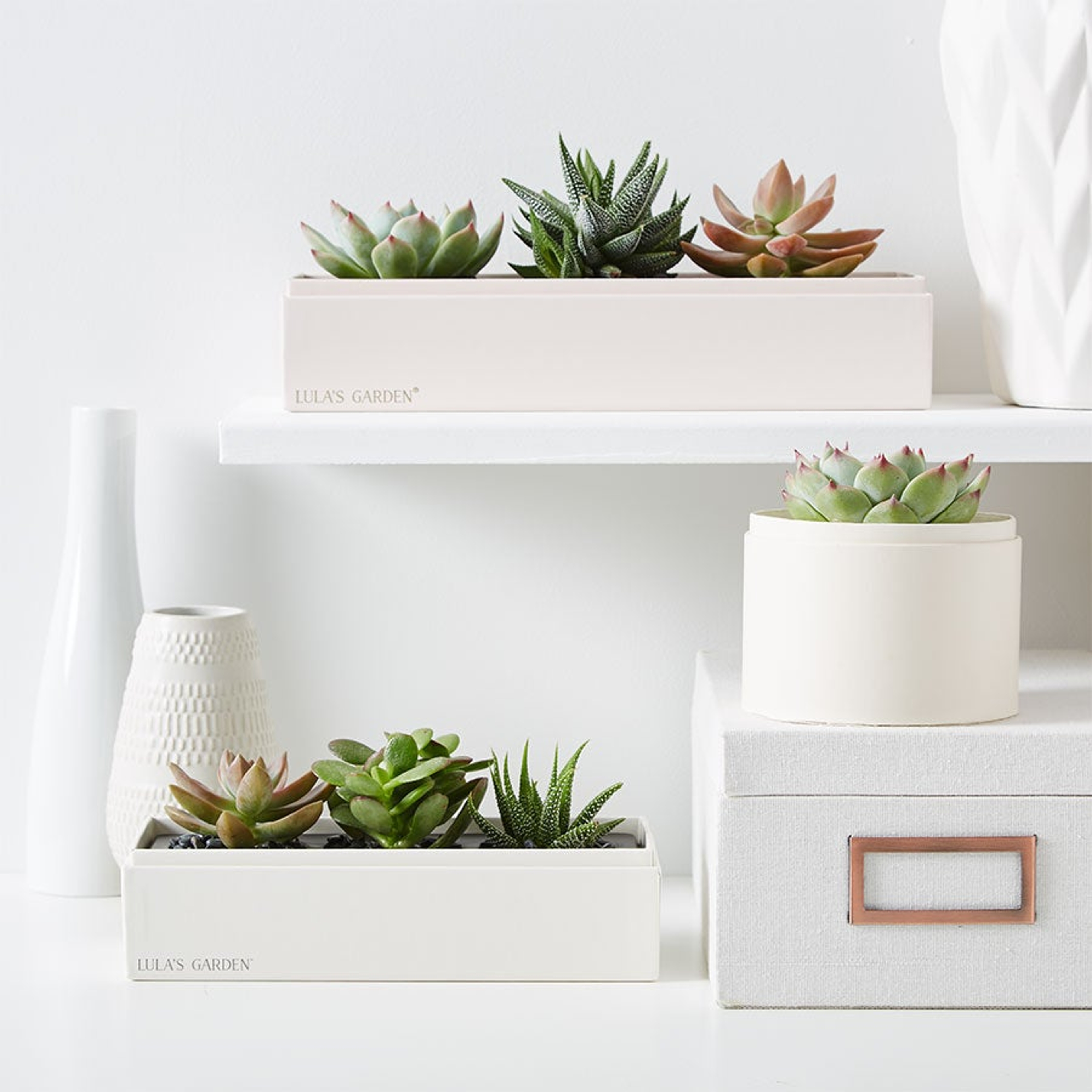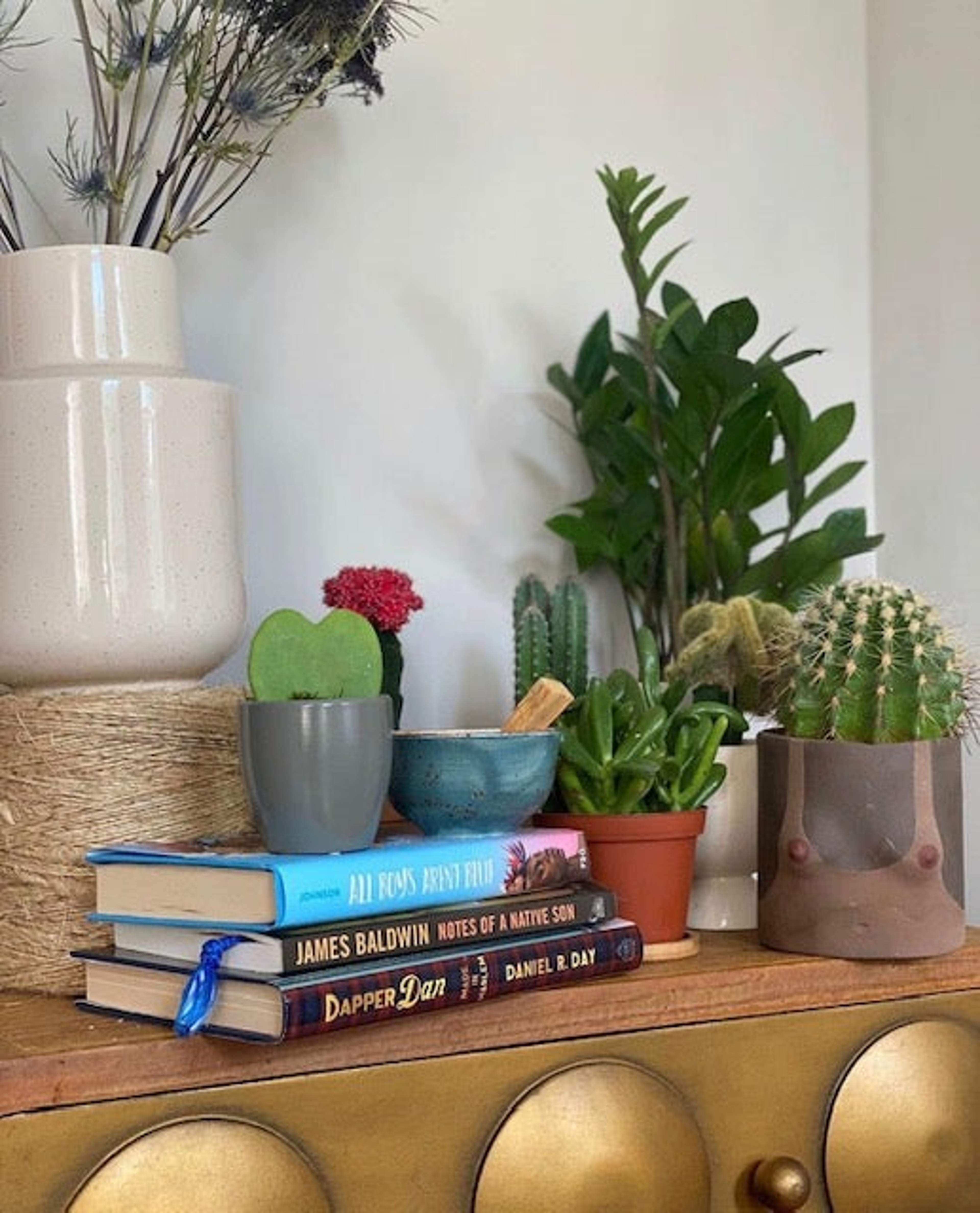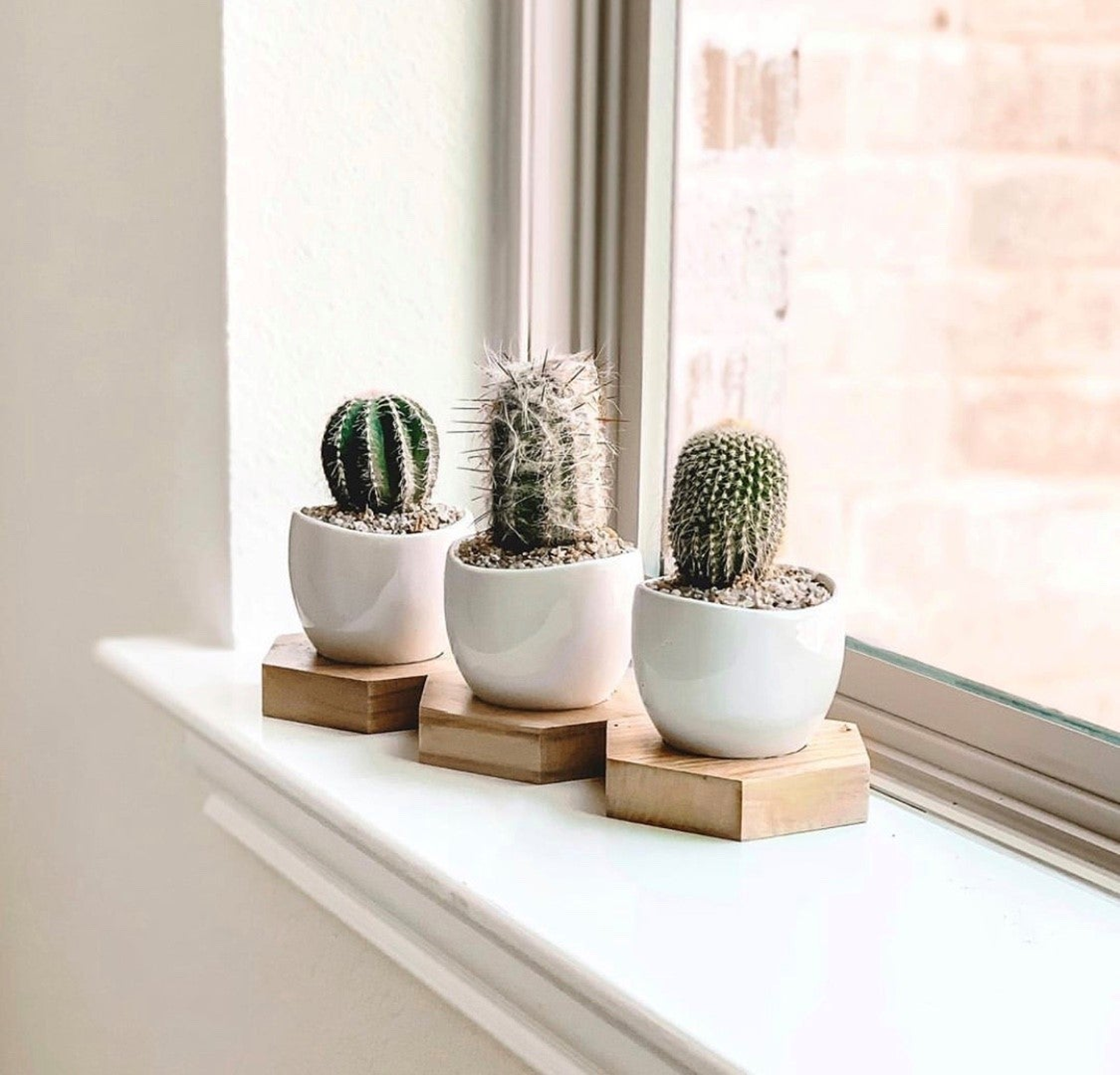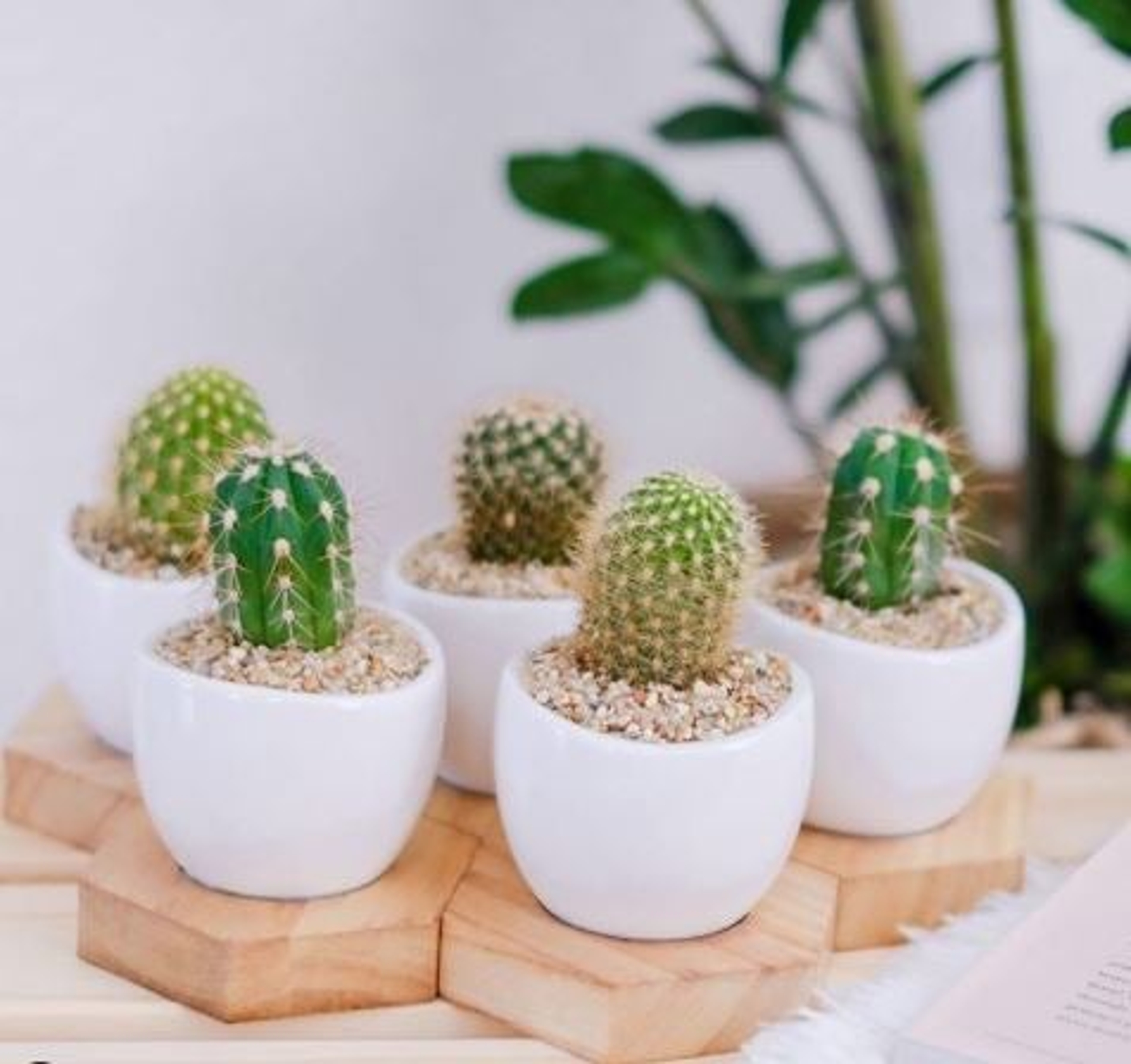Cacti & Succulent Care Tips
Jan 02, 2021
Six Succulent Care Dos and Don’ts
- Do check the soil before watering--if it still has moisture, wait a day or two.
- Do dust your plants regularly. One method is to gently spray them off under the sink.
- Do feed your cacti and succulents monthly with a fertilizer specially formulated for them.
- Don’t provide too much water or fertilizer. These are a succulent’s top two killers.
- Don’t keep prickly house plants where kids and pets play.
- Don’t keep cacti and succulents in shade. Their leaves and stems will start to stretch, resulting in odd, unhappy-looking plants.

Succulents are survivors. They are adapted to endure some of the harshest growing environments on Earth--where drought, hot days, and cold nights are commonplace and thirsty wildlife would snap them up in a heartbeat if it weren’t for all of their armaments--sharp tips, thorns, and thick skin. Durability is why they are the lowest-care house plants for busy plant lovers. Succulents don’t mind being ignored for a while. They are now-and-then plants but flourish when succulent care tips are followed.
Soil, Water, and Fertilization

In the wild, most succulents exist in porous soils that are low in organic matter and nutrients. Most desert growing seasons have light precipitation followed by stark, dry winters. When grown in the home, cacti and succulents prefer fast-draining soil and require light to low to no water as the seasons move from spring through to winter.
Many cactus and succulents are deep rooters, so choose moderately deep pots with ample drainage holes to keep water from pooling at the pot’s base. A good cactus and succulent mix will have mineral components, such as perlite, pumice, fine gravel, vermiculite, and sometimes sand, as well as light organic matter, including peat moss, compost, and fine aged bark. These soils are designed to offer just enough organic matter to hold some water while providing ample drainage for strong root growth.
During the warmest growing months, it is safe to water your succulent house plants weekly, especially if you bring them outdoors in summer. Follow this guideline as long as the weather is hot. Older plants that are root-bound may need to be watered more frequently. (“root-bound” or “pot-bound” means that a plant has outgrown its pot to the point where its roots have encircled the container’s interior.) In fall and spring, a little less water is often needed. Twice monthly watering may even be enough. In winter, once-monthly irrigation or no water will keep plants going while sparing them from potential root rot.

Light
Full sun or bright, uniform, indirect light will keep cacti and succulents happy. As a rule, cacti require the most sunlight--the more the better. Common succulents, like jade plant, Aloe plant, and Christmas cactus look best when grown in bright light. Any plant grown in full sun is subjected to more heat and tends to require a bit more water.
Temperature and Humidity
One perk is that almost all succulents can withstand high daytime heat, but at night they often prefer cooler temperatures. Temperature fluctuations like this are not a necessity but can result in happier plants--especially with cacti. Low to moderate humidity is optimal, while higher humidity levels can encourage spotting and fungal diseases.
Pests and Diseases

Soft and armored scale insects and mealybugs are the most common pests of succulents and cacti. That’s because they have straw-like piercing and sucking mouths long and strong enough to puncture the thinner, more tender skin along stem joints, growing tips, and new leaves.
Mealybugs are soft, white, mobile, and tend to feed in the crevices between leaves and stems. When you smash one it is reddish-orange inside. Scales have flexible (soft) or hard (armored) shield-like coverings, remain stationary, and exist in groups. They are most often found along tender stems or stem crevices. Both are tough to manage because they produce crawlers.
Crawlers are the virtually invisible nymphs, which hatch from scale or mealybug egg masses and “crawl” several feet to seek out and infest other plants.Because you cannot see them, it is important to keep pots and any surfaces around plants clean. It’s nice to do and is an effective pre-emptive measure to stop these pests.
Systemic pesticides are essential for stopping these pests on heavily spined cacti. Systemics enter a plant’s system and only harm the targeted pests. Mealybugs can be sprayed with a 25% solution of isopropyl alcohol and wiped off. (Combine ¼ cup of isopropyl alcohol with ¾ cup water.) Armored or soft scale can be scraped off, and then treated with insecticidal soap or Neem oil. Pick and spray twice a week until the pests are gone.
Repotting
Happy plants grow more quickly and should require repotting every three to four years. If you are unsure, look through the drainage holes at the base of the pot. If you see lots of intertwined roots, then it's time to re-pot. When choosing a new pot, make sure that it is just two to three inches larger than the last. If your plant is prickly, wear thick garden gloves.
Put a shallow layer of cactus mix into the new pot, and gently lift your plant out of its old pot. If the roots are intertwined then gently tease them apart. This will help them establish new roots faster and take up water and nutrients more easily. Center your plant’s root ball in the new pot. The final planting should have at least 1 ½ to 2 inches of headspace at the top for watering, so adjust the soil at the base of the pot accordingly.
Fill in the sides with the fresh mix, working it down with your fingers. Pack the soil firmly enough to ensure good soil-to-root contact and avoid air pockets. Then water until it runs through to the bottom of the pot. Check the sides for holes in the soil caused by air pockets. Fill in receded spots with a little extra mix. Finally, sprinkle the soil surface with decorative pebbles, shells, sea glass, or marbles for a decorative touch. Don't forget, we offer a wide variety of other Christmas plants delivered to you or a loved one. Shop our selection of Christmas plants and flowers today.












